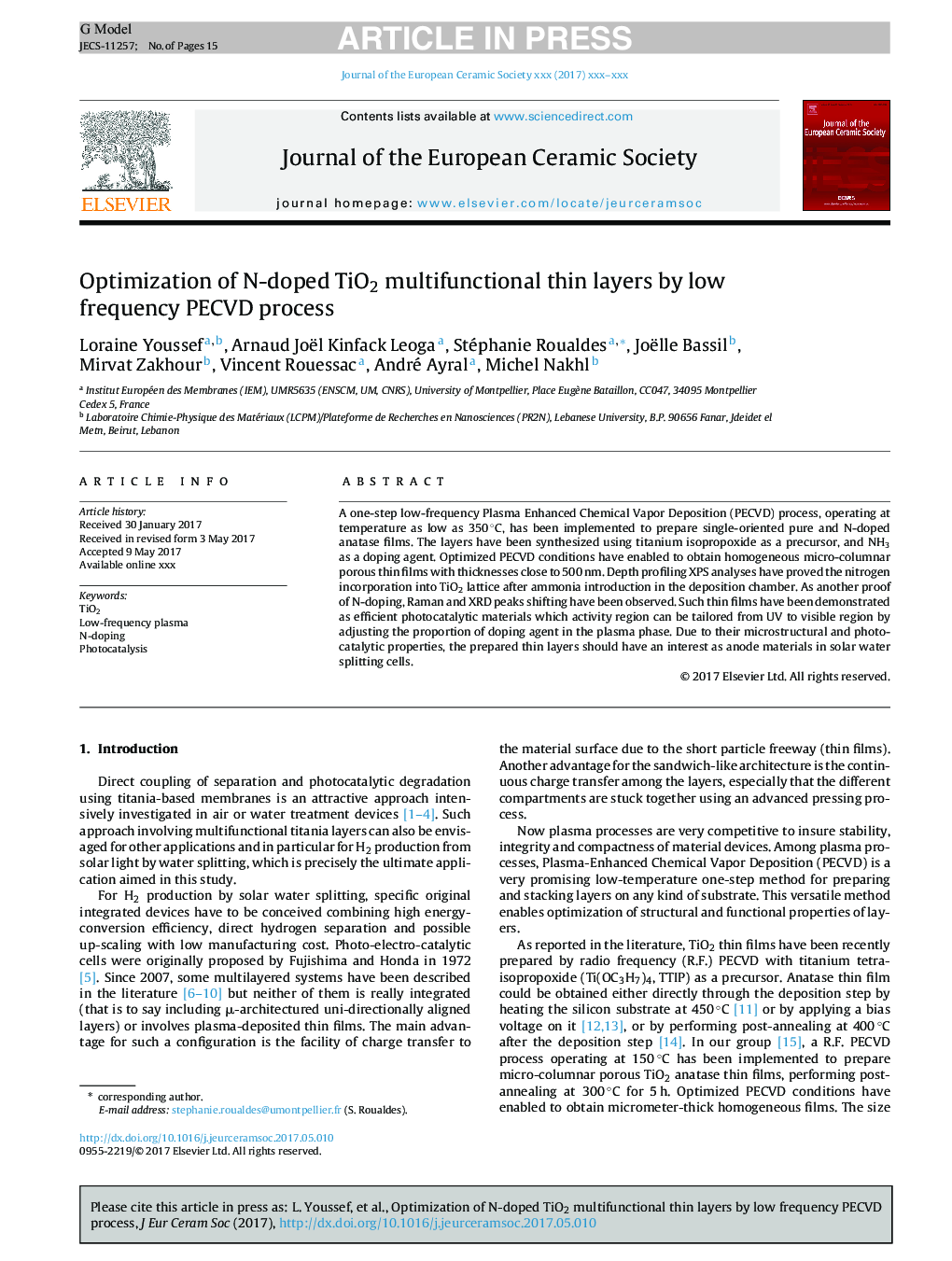| Article ID | Journal | Published Year | Pages | File Type |
|---|---|---|---|---|
| 7898936 | Journal of the European Ceramic Society | 2017 | 15 Pages |
Abstract
A one-step low-frequency Plasma Enhanced Chemical Vapor Deposition (PECVD) process, operating at temperature as low as 350 °C, has been implemented to prepare single-oriented pure and N-doped anatase films. The layers have been synthesized using titanium isopropoxide as a precursor, and NH3 as a doping agent. Optimized PECVD conditions have enabled to obtain homogeneous micro-columnar porous thin films with thicknesses close to 500 nm. Depth profiling XPS analyses have proved the nitrogen incorporation into TiO2 lattice after ammonia introduction in the deposition chamber. As another proof of N-doping, Raman and XRD peaks shifting have been observed. Such thin films have been demonstrated as efficient photocatalytic materials which activity region can be tailored from UV to visible region by adjusting the proportion of doping agent in the plasma phase. Due to their microstructural and photocatalytic properties, the prepared thin layers should have an interest as anode materials in solar water splitting cells.
Keywords
Related Topics
Physical Sciences and Engineering
Materials Science
Ceramics and Composites
Authors
Loraine Youssef, Arnaud Joël Kinfack Leoga, Stéphanie Roualdes, Joëlle Bassil, Mirvat Zakhour, Vincent Rouessac, André Ayral, Michel Nakhl,
